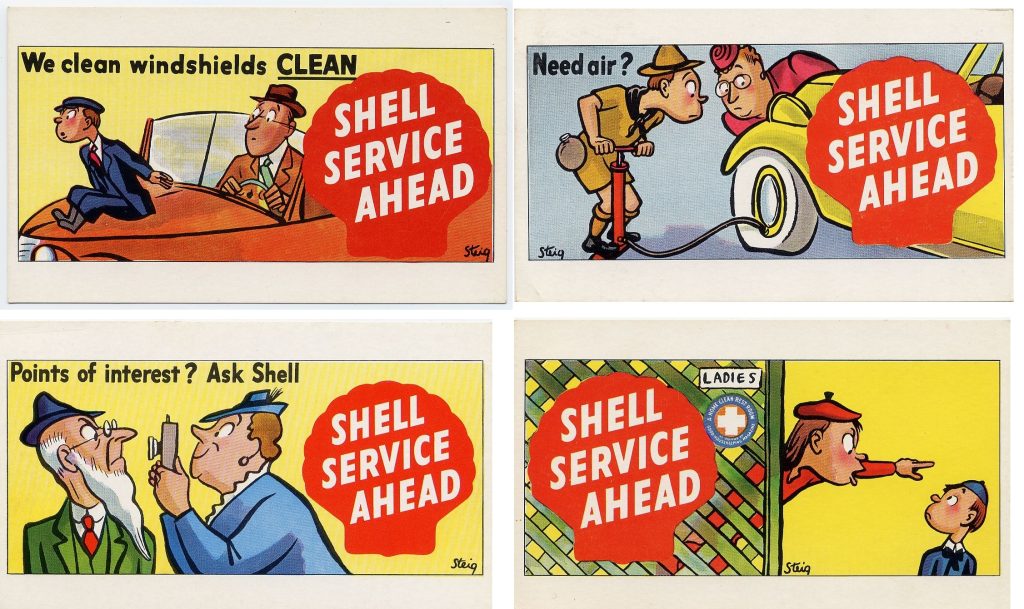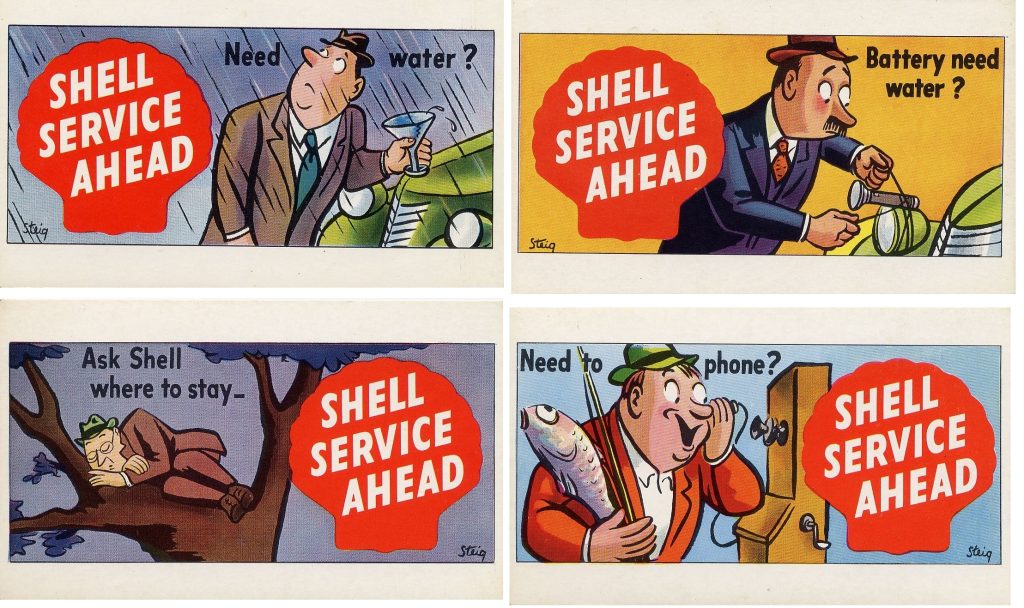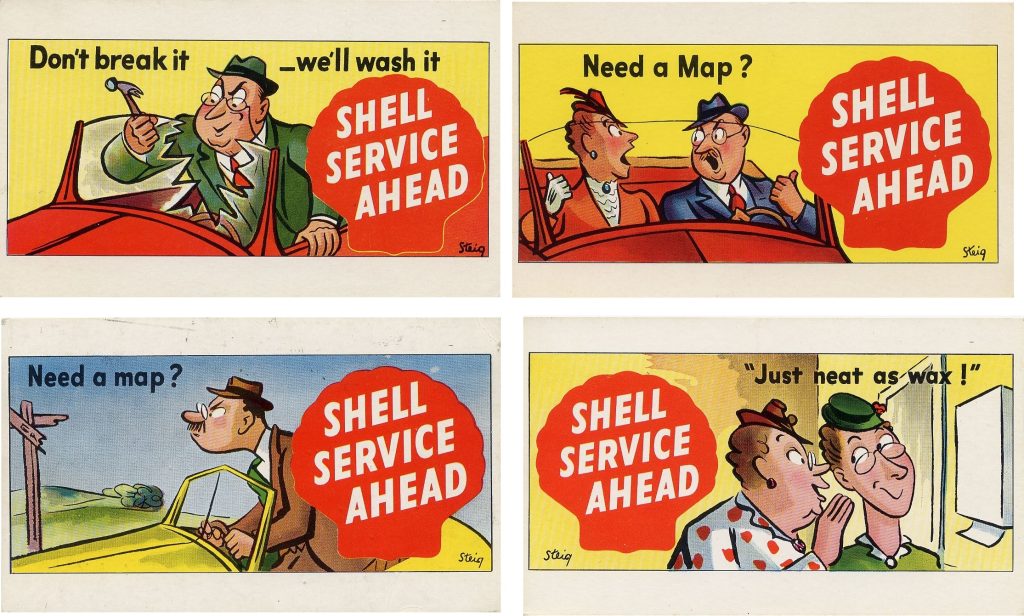Don Preziosi
Shell Service Ahead
postcards by William Steig
The “Shell Service Ahead” set from around 1940 is an advertising set illustrated by William Steig. The postcards were meant to remind customers of the various services they could find at Shell dealers: maps, water for themselves or their car, a clean windshield, restrooms, air for their tires, a phone, and advice on where to stay or what to see. The cards were given away free. The back of each card says, “Start a collection! Twelve of Steig’s famous cartoons will be reproduced for you on postcards this year. Free at Shell Dealers – as you drive along the highway, ask for new cards until your set is complete.”
William Steig was a multi-talented artist with many decades of artistic success, who created a body of work that can accurately be said to have delighted people of all ages. For readers of a certain age, say over 50, he is probably best known for over six decades of cartoons and covers he drew for The New Yorker from the 1930s to the 1990s – over 1,600 cartoons and 117 covers. His expressive and lusting men, his generously proportioned matrons, his streetwise kids, and his satyrs and well-endowed lovelies became quintessential staples of The New Yorker humor.
For a somewhat younger group of readers he is probably best remembered for the children’s books he began writing and illustrating in 1968, starting with Roland the Minstrel Pig. In 1970 his book Sylvester and the Magic Pebble won the Caldecott Medal, the annual award given for the most distinguished American picture book for children. Among his more than 30 children’s books was the popular Doctor DeSoto series.
For readers who are very young or just young at heart, he would most be remembered for the hugely successful computer animated movie Shrek! which was based on his 1990 picture book of the same name.
William Steig was born in Brooklyn in 1907 and grew up in the Bronx. His Polish-Jewish immigrant parents encouraged his artistic talents. They were both amateur artists and they were also socialists who thought the business world was degrading. They didn’t want their children to be laborers because they could be exploited, and they couldn’t afford to have them pursue professional careers. So they encouraged all of their children to pursue music or art.
Steig’s father went broke during the Great Depression, and in order to help the family finances William began selling his drawings and cartoons. He sold his first cartoon to The New Yorker in 1930. Although he was an immediate success, he needed to supplement his income through the 1930s with work in advertising, even though he disliked it. In the 1940s he shifted most of his artistic efforts to woodcarving and found some personal and critical success with it.
Allegedly, Steig was also responsible for changing the “attitude” of greeting cards. “Greeting cards used to be all sweetness and love,” he once told the Hartford Courant. “I started doing the complete reverse — almost a hate card — and it caught on.”
Steig had more wives than artistic careers. He was married four times. He continued to create until the end. He died in 2003.
* * *
Shell Service Ahead Postcards
All 12 cards are presented here.



[Editor’s note: If you like checklists, the images above can be copied and pasted into any word processing software. They are presented above without text for your convenience.]
* * *
Additionally, there is one other Steig Shell postcard that seems to be part of an earlier (postmarked in 1939) set. On the back it appears to be a “No. 2” which would indicate that there may be another, which is a much more difficult set to find.

Ah well, a true collector’s work is never done!
When I was in the eighth or ninth grade a friend of mine dated William Steig’s daughter, Maggie. I never met him, but I do remember Maggie. Must have been 1971 or 72. Long time ago!
Although some of the services Steig depicted are still relevant, I doubt many Shell stations have public phones now.